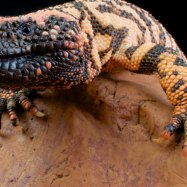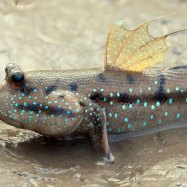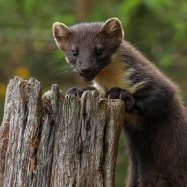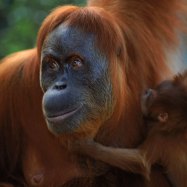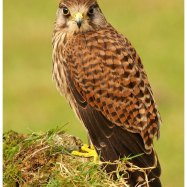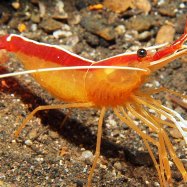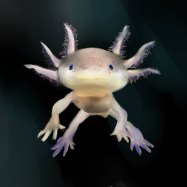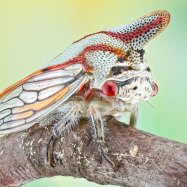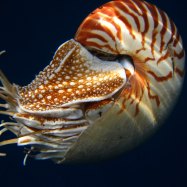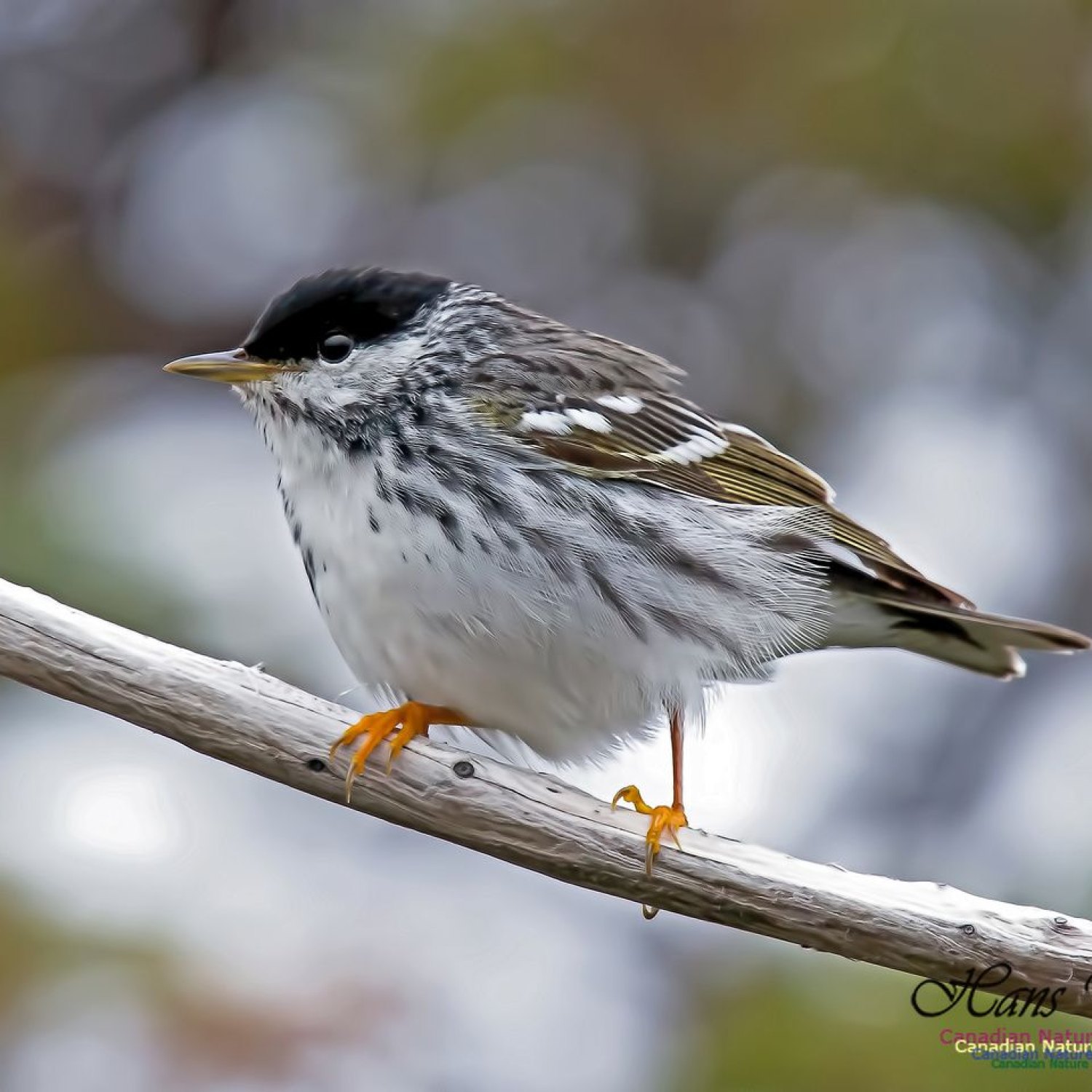
Blackpoll Warbler
12-14 cm
The Blackpoll Warbler is a small and compact bird found in the northern parts of the United States and Canada. It belongs to the family Parulidae and has a length of 12-14 cm. With its striking black and white plumage, it is a must-see for bird enthusiasts. Keep an eye out for this beautiful species on your next outdoor adventure! #BlackpollWarbler #BirdWatching #Parulidae #USWildlife
Animal Details Summary:
Common Name: Blackpoll Warbler
Kingdom: Animalia
Habitat: Boreal and subarctic forests
The Vibrant and Resilient Blackpoll Warbler: A Master of Survival in the Boreal Forest
The haunting melody of a warbler singing its heart out in the dense boreal forest is a truly enchanting experience. With their small, compact bodies and striking black and white plumage, the blackpoll warbler (Setophaga striata) is a common yet fascinating sight in the northern parts of the United States and Canada.Part of the kingdom Animalia and the phylum Chordata, blackpoll warblers, also known as the "flight artist," are a member of the aves class and the passeriformes order. They belong to the Parulidae family, which includes various species of New World warblers known for their colorful plumage and unique behaviors Blackpoll Warbler.
But what makes the blackpoll warbler stand out among other warblers in their habitat? In this article, we will dive into the remarkable characteristics and habits of this diminutive but resilient bird.
The Warbler's Habitat: A Boreal Wonder
The blackpoll warbler is a bird that is well-adapted to living in the boreal and subarctic forests, making it a common sight in North America. These birds are known for their long, migratory flights, which can cover up to 8,000 kilometers from their breeding grounds to their wintering grounds in South America.While the blackpoll warblers are known to breed in the boreal forests, they can also be found in a variety of habitats during their migratory journey, such as the tundra, coastal areas, and even in urban parks. Despite their diverse range, they tend to prefer dense coniferous forests with an understory of shrubs where they can find plenty of insects to feed on.
One of the most remarkable feats of these birds is their yearly migration, where they fly over the open ocean, facing strong winds and unpredictable weather, to reach their wintering grounds in Colombia, Venezuela, and Brazil. This astonishing journey takes about 72 hours, during which the birds don't stop to rest or eat.
Feasting on Insects: The Warbler's Diet
Blackpoll warblers are insectivorous birds that have a varied diet. During the breeding season, they mainly feed on insects, such as flies, spiders, and caterpillars, which they capture by hopping and fluttering around the branches and leaves of trees Bearded Collie. They also have a unique way of extracting insects from coniferous cones, using their sharp beaks to pierce through the scales and get to the hidden insects.During their migratory journey, blackpoll warblers rely heavily on high-energy foods such as bayberries, which they pluck from the shrubs along their flight path. This helps them replenish their energy reserves, allowing them to continue their arduous journey without any interruptions.
Surviving in the Cold: The Warbler's Adaptations
Living and breeding in the boreal forests means that blackpoll warblers have to endure harsh, cold winters. To survive the freezing temperatures, these little birds have developed some remarkable adaptations.Their black and white plumage serves as excellent camouflage against the tree trunks, helping them evade predators such as hawks and owls. Moreover, their compact size and small feet allow them to conserve heat and navigate through the dense foliage of the forest more efficiently.
Another fascinating adaptation of the blackpoll warbler is their ability to lower their body temperature during their long migratory flights. By doing so, they conserve energy and can fly for long periods without having to rest or eat.
Aiding Scientific Research and Conservation Efforts
While blackpoll warblers are considered a common breeding bird in North America, there are still many unknowns about their behaviors and biology. Due to their migratory nature, it is challenging to study their breeding patterns and behaviors in their remote boreal habitat.Thanks to modern technology and meticulous research, scientists have discovered some incredible facts about the blackpoll warbler. For instance, a study by researchers from the University of Guelph found that blackpoll warblers navigate using a magnetic compass, using Earth's magnetic fields to guide them on their long journey south.
Studies like these not only help us better understand the adaptations and behaviors of these birds but also aid in their conservation efforts by identifying their breeding and wintering grounds, helping to protect these areas and the birds that depend on them.
Nurturing a Better Future for Blackpoll Warblers
The blackpoll warbler is a prime example of a species that is resilient and adept at adapting to their environment. However, like many other migratory birds, they face numerous threats that put their well-being and survival at risk.One of the biggest threats to blackpoll warblers is habitat loss due to deforestation and development. The destruction of the boreal forest may also affect their wintering grounds, making it crucial to conserve the forests they rely on for survival.
Climate change is also a significant concern for these birds, as it affects the timing of their migration and breeding, leading to unfavorable conditions for nesting and raising their young.
As responsible citizens, we can all contribute to preserving the natural habitats of these beautiful creatures by supporting organizations that work towards their conservation, reducing our use of natural resources, and being mindful of the impact of our actions on the environment.
In Conclusion
The blackpoll warbler may be small, but it is an extraordinary bird with remarkable abilities and adaptations. From their long, migratory flights to their insectivorous diet and unique behaviors, these birds continue to amaze us with their resilience and perseverance in the face of challenges.As we strive to protect and cherish the natural world, let us not forget the remarkable creatures that inhabit it, like the blackpoll warbler, a true master of survival in the boreal forest.

Blackpoll Warbler
Animal Details Blackpoll Warbler - Scientific Name: Setophaga striata
- Category: Animals B
- Scientific Name: Setophaga striata
- Common Name: Blackpoll Warbler
- Kingdom: Animalia
- Phylum: Chordata
- Class: Aves
- Order: Passeriformes
- Family: Parulidae
- Habitat: Boreal and subarctic forests
- Feeding Method: Insectivorous
- Geographical Distribution: North America
- Country of Origin: United States, Canada
- Location: Northern parts of United States and Canada
- Animal Coloration: Black and white
- Body Shape: Small and compact
- Length: 12-14 cm
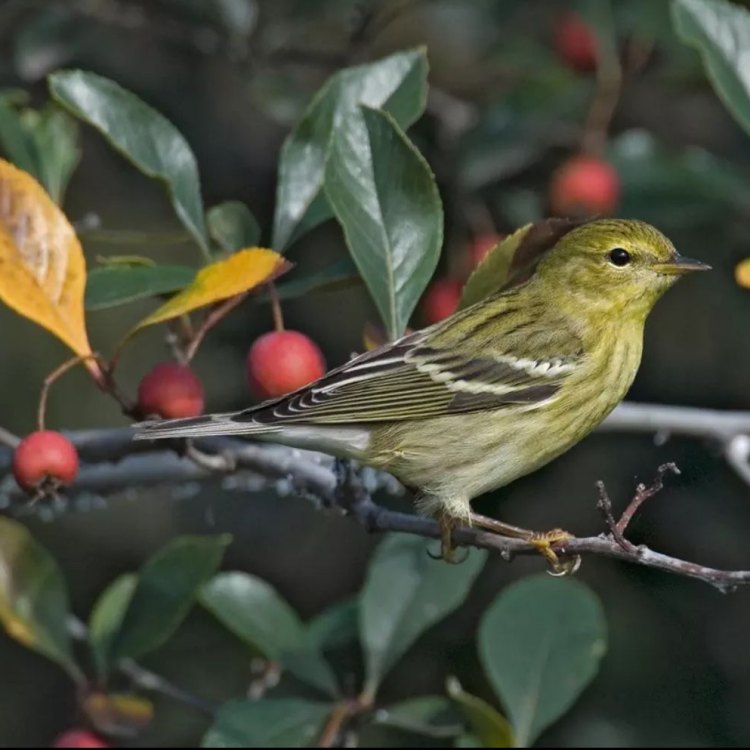
Blackpoll Warbler
- Adult Size: Small
- Average Lifespan: Around 5-6 years
- Reproduction: Sexual
- Reproductive Behavior: Monogamous
- Sound or Call: High-pitched, thin, and sweet song
- Migration Pattern: Long-distance migratory
- Social Groups: Mostly solitary
- Behavior: Active and agile while foraging
- Threats: Habitat loss, climate change, predation
- Conservation Status: Near Threatened
- Impact on Ecosystem: Important insect control
- Human Use: Birdwatching
- Distinctive Features: Black cap and white underparts
- Interesting Facts: The Blackpoll Warbler is known for its impressive long-distance migration, spanning up to 12,500 kilometers from its breeding grounds in North America to its wintering grounds in South America.
- Predator: Many predators including snakes, mammals, and birds of prey
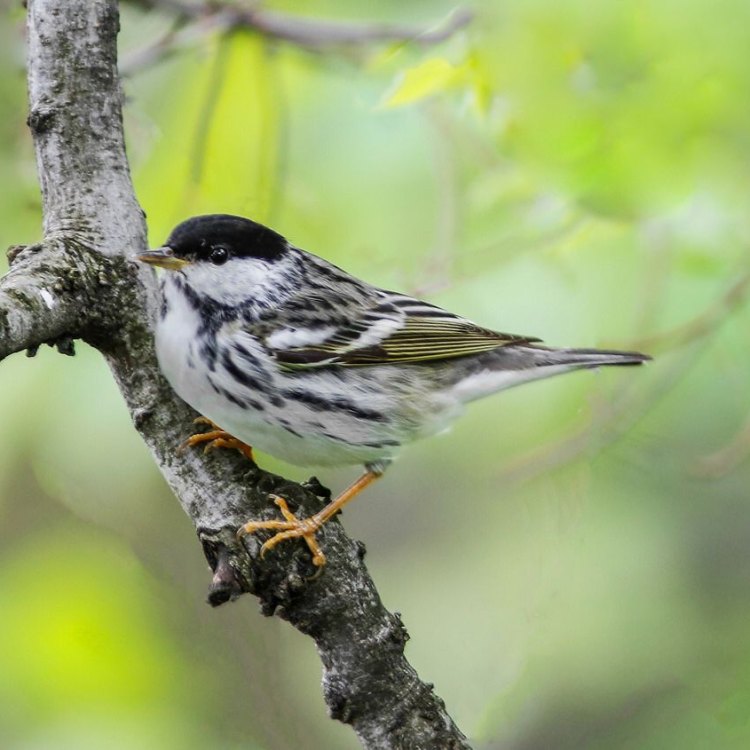
Setophaga striata
The Enigmatic Blackpoll Warbler: A Small but Mighty Songbird with an Impressive Journey
The Blackpoll Warbler, scientifically known as Setophaga striata, is a small but mighty songbird that inhabits the vast boreal forests of North America. Known for its high-pitched, thin, and sweet song, the black-capped warbler is a favorite among birdwatchers and nature enthusiasts. This elusive bird may seem like just another passerine species, but upon closer observation, its unique characteristics and impressive journey make it stand out among its feathered counterparts.Size and Lifespan:
The Blackpoll Warbler, like most warblers, is a small bird, measuring only 5 PeaceOfAnimals.Com.1 inches in length and weighing around 0.3 to 0.4 ounces. Its wingspan can reach up to 8 inches, making it one of the smaller migratory birds. These tiny creatures may seem fragile, but they possess remarkable endurance and strength to embark on a long and arduous migration journey every year.
On average, Blackpoll Warblers have a lifespan of around 5 to 6 years. However, some individuals may live longer, with the oldest recorded Blackpoll Warbler reaching 11 years of age. Like many other migratory birds, their lives are dedicated to breeding and migration, with each year being a battle for survival.
Reproduction and Behavior:
Blackpoll Warblers are sexually reproductive birds, with males and females forming monogamous pairs during the breeding season Black Witch Moth. They typically arrive at their breeding grounds in late May or early June and waste no time in building their nests. The female constructs a neat, cup-shaped nest using twigs, grasses, and lichens. The nests are often placed in the lower branches of small trees, where they are well hidden from predators.
The reproductive behavior of Blackpoll Warblers is fascinating, with females laying 3-5 eggs at a time. Interestingly, each egg can have a different father, as females may copulate with multiple males. Once the eggs are laid, both parents take turns incubating them for 12-14 days. After hatching, the young birds are fed mainly insects for around 10 days before leaving the nest.
Blackpoll Warblers are mostly solitary birds, rarely forming social groups except during migration. They are active and agile while foraging, hopping along branches and leaves to catch insects. They are known for their impressive foraging skills, often hanging upside down to reach their prey. These birds are also vocal, with their signature high-pitched, thin, and sweet songs being heard throughout their breeding grounds.
Migration and Threats:
The Blackpoll Warbler is a long-distance migratory bird, known for its incredible journey from its breeding grounds in North America to its wintering grounds in South America. This warbler has one of the longest migration routes of any songbird, spanning up to 12,500 kilometers. They begin their journey in the fall, traveling primarily over the Atlantic Ocean, until reaching their destinations in Venezuela, Colombia, and Brazil.
Their impressive migratory pattern is a key factor in the survival of the species. However, this long journey also poses many threats to their population. One of the biggest challenges they face is habitat loss. The boreal forests where they breed are being continuously cleared for human development, leaving fewer and fewer suitable nesting sites for these birds. Climate change is also a significant threat to their survival, with rising temperatures affecting their breeding and migration patterns.
Apart from these human-induced threats, Blackpoll Warblers also face predation from various animals, including snakes, mammals, and birds of prey. These threats, combined with their long and challenging migration journey, have led to a decline in their population, earning them a near-threatened conservation status.
Impact on Ecosystem and Human Use:
Despite their small size and understated appearance, Blackpoll Warblers play a crucial role in the ecosystem. As insectivorous birds, they feed on insects, contributing to important insect control in their habitats. These birds are especially helpful during the breeding season when they feed large amounts of insects to their young, keeping the insect population in check.
Their unique characteristics and impressive journey have also made them an important species for humans. Birdwatchers and nature enthusiasts are drawn to the Blackpoll Warblers, making them a significant attraction for ecotourism in some areas. This, in turn, contributes to local economies and promotes conservation efforts for the species.
Distinctive Features and Interesting Facts:
The Blackpoll Warbler has some distinct features that make it easily recognizable. It has a black cap and white underparts, with a black streak running through its eye. The rest of its plumage is a contrasting black and white, with some yellow on its sides. These features help distinguish it from other warblers that share its habitat.
One of the most interesting facts about the Blackpoll Warbler is its impressive migration journey. As mentioned earlier, these birds travel up to 12,500 kilometers from North America to South America, the longest migration among any songbird. What makes this journey even more remarkable is that these birds do not have a built-in navigation system or a map to guide them. Instead, they rely on instinct and magnetic fields to navigate.
In addition to this impressive feat, Blackpoll Warblers are also known for their high-altitude flights during migration. These birds can fly at an altitude of up to 12,000 meters, making them one of the highest-flying migratory birds in the world.
Conclusion:
The Blackpoll Warbler may be a small yet mighty songbird, but its journey and characteristics make it stand out among its peers. From its long-distance migratory pattern to its monogamous reproductive behavior, this bird is a wonder of nature. However, human-induced threats like habitat loss and climate change are posing serious risks to its survival. It is essential for us as humans to recognize the Blackpoll Warbler's importance and take action to protect this amazing species. After all, we share this planet with all creatures big and small, and it is our responsibility to ensure their survival and well-being.
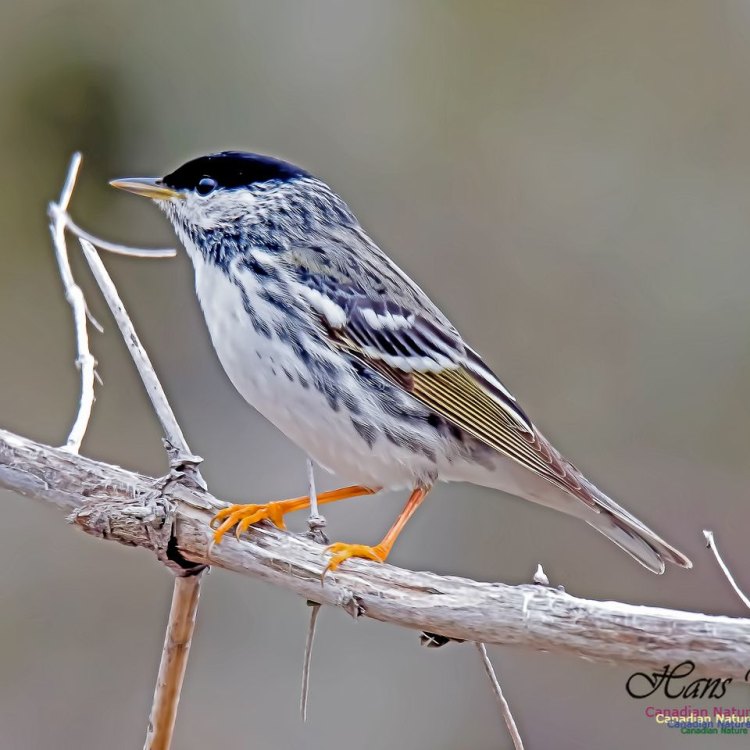
The Vibrant and Resilient Blackpoll Warbler: A Master of Survival in the Boreal Forest
Disclaimer: The content provided is for informational purposes only. We cannot guarantee the accuracy of the information on this page 100%. All information provided here may change without prior notice.

